Technology
Why tech bros are backing Trump

 BBC
BBCDonald Trump, whose time in office made him a pariah to many in the business world, has found new champions among tech leaders as his path back to the White House takes shape.
Elon Musk, the world’s richest person, became the biggest name yet to throw his weight behind the former president this month, endorsing him and getting involved in fundraising efforts.
The move capped weeks of mounting support from the tech world, as influential venture capitalists and tech leaders, including former Democratic donor Allison Huynh, investors Marc Andreessen and Ben Horowitz and the Winklevoss twins, players in the world of crypto, rallied publicly around Trump.
Support for Trump is hardly universal.
But it marks a sharp turn from just a few years ago, when companies rushed to distance themselves from Trump in the weeks after the 2021 US Capitol riot.
Coming from Silicon Valley, where backing a ban on gay marriage – a Republican cause – once cost an executive his job, the change is especially striking.
At a cryptocurrency event at the Republican National Convention in Milwaukee, Wisconsin, Nicholas Longo, 27, of wealth management firm Fortuna Investors, said when he voted for Trump four years ago he felt there was stigma attached.
“In 2020, it would have been inadvisable for me to express support for Donald Trump,” he said. Now, all that has changed.
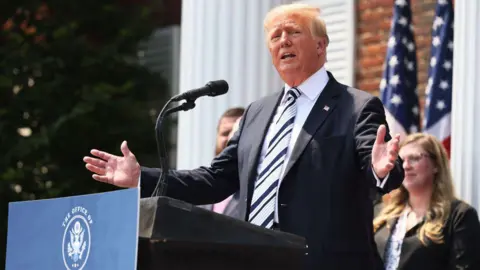 Getty Images
Getty ImagesThe shift in the political winds has long been evident on social media, where Mr Musk and investor David Sacks are among those to regularly scorn President Joe Biden.
But their decision to open their wallets to the Trump campaign is poised to significantly expand their influence beyond their traditional circle – with major consequences for the election.
The support from tech leaders has helped Trump close the fundraising gap that he faced against Mr Biden a few months ago.
“He was pretty far behind and struggling at the end of April,” said Sarah Bryner, research director at OpenSecrets. “In the last eight weeks, it’s a completely different campaign.”
She said the pledges sent a strong signal on how the tide is turning, noting that signs of victory at the polls often help push potential donors off the fence.
“Success begets success,” she said.
Data from OpenSecrets shows Democrats claiming the larger share of venture capitalist donations in recent elections – and Mr Biden’s decision to bow out of the race is expected to ignite further interest.
However, Trump’s new friends remain committed.
According to the Wall Street Journal earlier this month, Mr Musk pledged $45m a month to the Trump campaign – which would make him one of the biggest donors this year.
The billionaire has acknowledged his work on fundraising efforts tied to the campaign, but denied the sum, saying his contributions will be at a “much lower level“.
“I believe in an America that maximizes individual freedom and merit. That used to be the Democratic Party, but now the pendulum has swung to the Republican Party,” Mr Musk wrote on X, the social media platform he owns that was formerly known as Twitter, after Mr Biden dropped out.
Analysts said the backing from key figures in the tech world suggested that Trump was widening his appeal.
“He’s convinced Republicans he’s not as bad as they say… and now we’re seeing that’s broadening out,” said Sal Russo, a veteran Republican consultant based in California.
“Do I think he’s going to win Santa Clara County? No, but he’s going to do better,” said Mr Russo.
 Getty Images
Getty ImagesIn Trump’s corner: Elon Musk
Tech leaders have said they are concerned about the Biden administration’s crackdown on crypto, and cautious approach to artificial intelligence. For example, a recent executive order requires firms to comply with government AI safety standards.
“Bad government policies are now the #1 threat to Little Tech,” Mr Andreessen and Mr Horowitz, whose firm invests in start-ups and is a big player in crypto and AI, wrote in a recent essay. “The time has come to stand up.”
Mr Musk’s decision to back Trump might appear a startling shift for a man who had historically shunned political donations.
He reportedly once waited in line for six hours to shake Barack Obama’s hand, and as recently as 2018 described himself as politically moderate.
In 2017, he was among the first members to quit a White House business council, parting ways with Trump over climate change policies.
His company, Tesla, makes electric cars, which Trump has repeatedly criticised as expensive and impractical.
However, Mr Musk has long bristled at oversight by financial regulators.
His criticism of Mr Biden ramped up two years ago, after he did not get an invite to a White House business meeting, a snub that led him to tell CNBC he felt unfairly “ignored”.
On social media, he has increasingly waded into other debates over Covid lockdowns, the war in Ukraine, China policy and transgender issues.
Mr Musk, whose SpaceX rocket firm does billions of dollars of government business, has a relationship with a possible Trump administration to consider as well.
Self-interest in Silicon Valley
Democrats said the shift in the tech world has been motivated by self-interest, noting that Mr Biden has proposed new taxes on multi-millionaires and unrealised capital gains.
He has also alienated some with his embrace of organised labour, and his administration’s pursuit of tech companies in anti-monopoly and other cases.
Businessman Mark Cuban, who supports Democrats, suggested that the gravitation towards Trump was a “bitcoin play” – a bet that cryptocurrency value could be boosted by high inflation and political chaos that Democrats say would result under a Trump administration.
 Getty Images
Getty ImagesSwing to the right
Stanford Business School professor Neil Malhotra, who has studied the political views of tech founders, said it would be a mistake to conflate the “most vocal people on Twitter” with the industry overall – or even its elites, whose views historically have straddled both parties.
A 2017 survey he and colleagues conducted found that as a group, tech leaders were aligned with Democrats on issues such as gay marriage and abortion – even taxes. However, they swung Republican in strongly opposing regulation.
He noted that since the survey, new social issues such as policing, schooling and transgender rights have come to the fore. San Francisco has been a key battleground in those debates, driving some of the tech world backlash.
“The suspicion is that most people in venture capital are still centre-left,” Prof Malhotra said. But, he added: “There’s definitely a movement to the Republican Party.”
Trump’s shift on tech
Evan Swarztrauber, an adviser to the Foundation for American Innovation thinktank, said tech leaders were betting Trump would be more hands-off on crypto and AI.
But the gamble is not without risk.
As president, Trump won praise from the business community by cutting taxes, putting anti-labour officials in charge of labour rights and generally veering away from regulation.
But he also took a markedly more interventionist approach to the economy – and to tech – than previous administrations – starting a trade war with China, ordering a TikTok ban, and launching some of the ongoing anti-monopoly lawsuits against tech companies.
Since then, he has pushed the Republican party further in that direction – while at the same time moderating or reversing himself on issues such as the TikTok ban and crypto.
Jennifer Huddleston, a senior fellow in tech policy for the libertarian Cato Institute, said Trump may be shifting his stance on some tech issues, noting that he is now the owner of a social media platform.
JD Vance, Trump’s choice for vice-president, also previously worked in venture capital and got key support from PayPal’s Peter Thiel during his 2022 senate campaign.
But she warned that the effort to distinguish between the interests of “big” tech and “little” tech would prove difficult when it comes time to govern.
 Getty Images
Getty ImagesDavid Broockman, a political science professor at the University of California, Berkeley, said Trump was finding success in the business world by presenting himself as more moderate than other members of his party on social issues such as abortion.
After boasting of being “proudly the person responsible” for removing Roe v Wade protections, Trump has rejected claims he will back a national ban pushed by many conservatives, and says the matter should be left up to the states.
But Prof Broockman noted that Trump also ran a relatively moderate campaign in 2016, only to adopt more extreme policies once in office.
Those hurt his public approval and eventually frayed Republican ties to Wall Street, a traditional source of support for the party.
“Tech and other business leaders are banking on a lot of Trump’s more eccentric policy ideas … just not happening,” Prof Broockman said. “But they really could happen.”
Outside of tech, Trump has backed radical changes including mass deportations of undocumented immigrants, a dramatic reduction in the government workforce and a 10% tariff on all goods coming into the country.
But Garrett Johnson, co-founder of the Foundation for American Innovation and now an executive at a venture-backed tech firm, said he thought that as time had passed more tech and business elites have come around to Trump’s views.
“Trump singlehandedly made the threat that China poses to our country a national topic,” he said. “He was right and everyone else had to come along.”
“So absolutely I think that is part of the dynamic, of the vibe shift,” he said. “Was he right on everything? No, but on many big issues Trump was right.”
Reporting contributed by Jude Sheerin at the Republican National Convention
Science & Environment
“Dark oxygen” created in the ocean without photosynthesis, researchers say

Researchers have discovered bundles of “dark oxygen” being formed on the ocean floor.
In a new study, over a dozen scientists from across Europe and the United States studied “polymetallic nodules,” or chunks of metal, that cover large swaths of the sea floor. Those nodules and other items found on the ocean floor in the deep sea between Hawaii and Mexico were subjected to a range of experiments, including injection with other chemicals or cold seawater.
The experiments showed that more oxygen — which is necessary for all life on Earth — was being created by the nodules than was being consumed. Scientists dubbed this output “dark oxygen.”
About half of the world’s oxygen comes from the ocean, but scientists previously believed it was entirely made by marine plants using sunlight for photosynthesis. Plants on land use the same process, where they absorb carbon dioxide and produce oxygen. But scientists for this study examined nodules about three miles underwater, where no sunlight can reach.
This isn’t the first time attention has been drawn to the nodules. The chunks of metal are made of minerals like cobalt, nickel, manganese and copper that are necessary to make batteries. Those materials may be what causes the production of dark oxygen.
“If you put a battery into seawater, it starts fizzing,” lead researcher Andrew Sweetman, a professor from the Scottish Association for Marine Science, told CBS News partner BBC News. “That’s because the electric current is actually splitting seawater into oxygen and hydrogen [which are the bubbles]. We think that’s happening with these nodules in their natural state.”
The metals on the nodules are valued in the trillions of dollars, setting of a race to pull the nodules up from the ocean’s depths in a process known as deep sea or seabed mining. Environmental activists have decried the practice.
Sweetman and other marine scientists worry that the deep sea mining could disrupt the production of dark oxygen and pose a threat to marine life that may depend on it.
“I don’t see this study as something that will put an end to mining,” Sweetman told the BBC. “[But] we need to explore it in greater detail and we need to use this information and the data we gather in future if we are going to go into the deep ocean and mine it in the most environmentally friendly way possible.”
Technology
Quantum computers teleport and store energy harvested from empty space
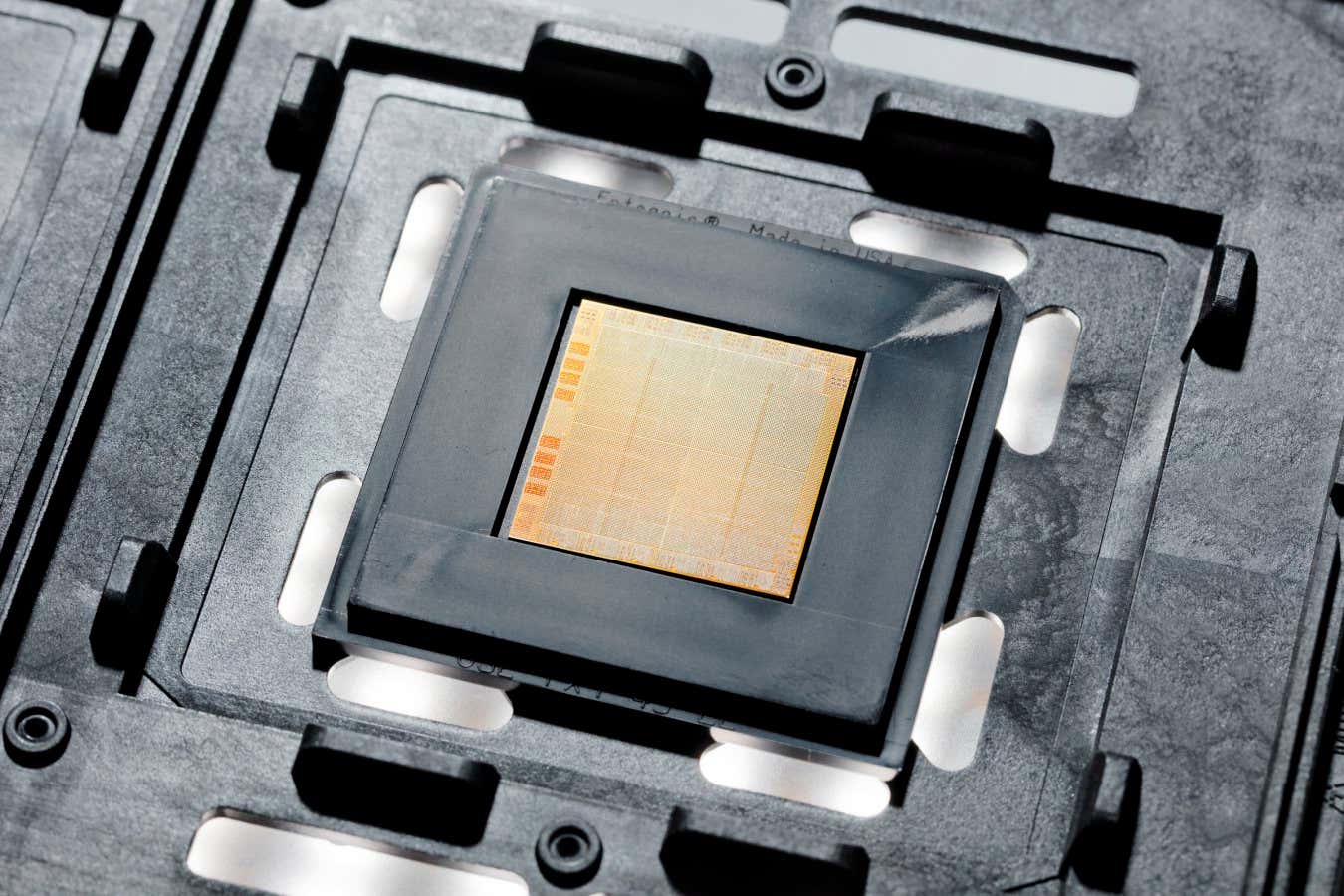

A quantum computing chip
IBM
Energy cannot be created from nothing, but physicists found a way to do the next best thing: extract energy from seemingly empty space, teleport it elsewhere and store it for later use. The researchers successfully tested their protocol using a quantum computer.
The laws of quantum physics reveal that perfectly empty space cannot exist – even places fully devoid of atoms still contain tiny flickers of quantum fields. In 2008, Masahiro Hotta at Tohoku University in Japan proposed that those flickers, together with the …
Science & Environment
What caused the hydrothermal explosion at Yellowstone National Park? A meteorologist explains
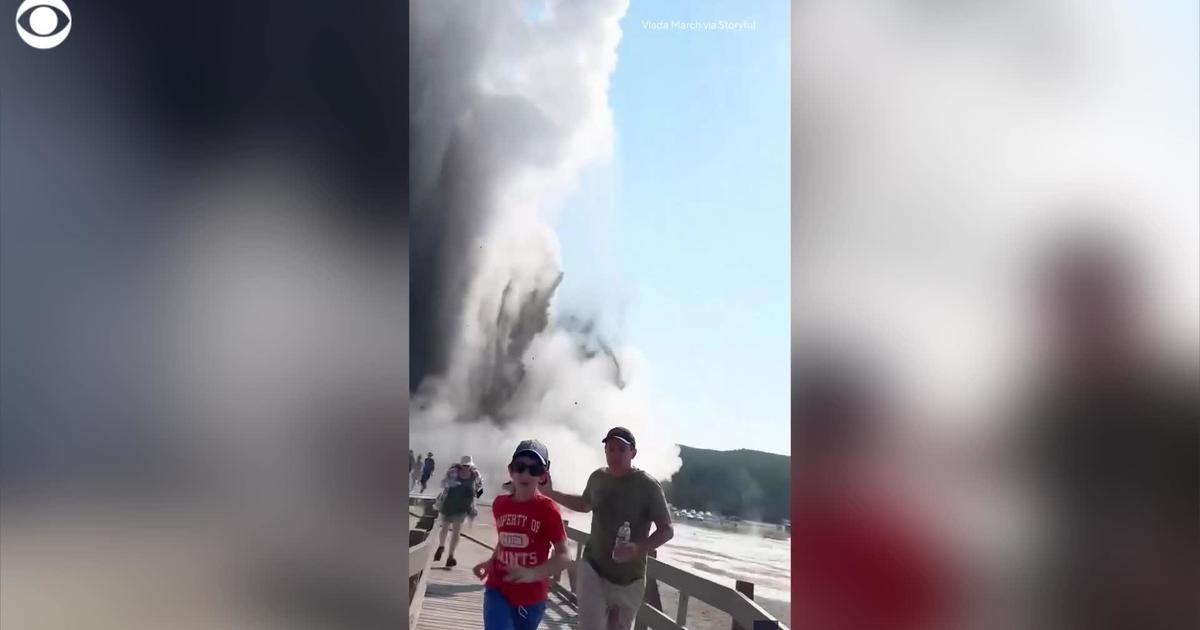
Yellowstone National Park visitors were sent running and screaming Tuesday when a hydrothermal explosion spewed boiling hot water and rocks into the air. No one was injured, but it has left some wondering: How does this happen and why wasn’t there any warning?
The Weather Channel’s Stephanie Abrams said explosions like this are caused by underground channels of hot water, which also create Yellowstone’s iconic geysers and hot springs.
“When the pressure rapidly drops in a localized spot, it actually forces the hot water to quickly turn to steam, triggering a hydrothermal explosion since gas takes up more space than liquid,” Abrams said Wednesday on “CBS Mornings.” “And this explosion can rupture the surface, sending mud and debris thousands of feet up and more than half a mile out in the most extreme cases.”
Tuesday’s explosion was not that big, Abrams said, “but a massive amount of rocks and dirt buried the Biscuit Basin,” where the explosion occurred.
A nearby boardwalk was left with a broken fence and was covered in debris. Nearby trees were also killed, with the U.S. Geological Survey saying the plants “can’t stand thermal activity.”
“Because areas heat up and cool down over time, trees will sometimes die out when an area heats up, regrow as it cools down, but then die again when it heats up,” the agency said on X.
The USGS said it considers this explosion small, and that similar explosions happen in the national park “perhaps a couple times a year.” Often, though, they happen in the backcountry and aren’t noticed.
“It was small compared to what Yellowstone is capable of,” USGS Volcanoes said on X. “That’s not to say it was not dramatic or very hazardous — obviously it was. But the big ones leave craters hundreds of feet across.”
The agency also said that “hydrothermal explosions, “being episodes of water suddenly flashing to steam, are notoriously hard to predict” and “may not give warning signs at all.” It likened the eruptions to a pressure cooker.
While Yellowstone sits on a dormant volcano, officials said the explosion was not related to volcanic activity.
“This was an isolated incident in the shallow hot-water system beneath Biscuit Basin,” the USGS said. “It was not triggered by any volcanic activity.”
Technology
What happened to the Metaverse?

S6
Ep135

What happened to the Metaverse?
Host Andrew Davidson is joined by technology experts Brian Benway and Jan Urbanek in a discussion about the Metaverse. Our experts shed light on the latest technological and hardware advancements and marketing strategies from Big Tech. What will it take for the Metaverse to gain mainstream popularity? Listen now to find out!
Head over to Mintel’s LinkedIn to let us know what you think of today’s episode, and visit mintel.com to become a member of our free Spotlight community.
Visit the Mintel Store to explore all our technology research and buy a report today.
Meet the Host

Andrew Davidson
SVP/Chief Insights Officer, Mintel Comperemedia.
Meet the Guests

Brian Benway
Senior Analyst, Gaming and Entertainment, Mintel Reports US.

Jan Urbanek
Senior Analyst, Consumer Technology, Mintel Reports Germany.
Mintel News
For the latest in consumer and industry news, top trends and market perspectives, stay tuned to Mintel News featuring commentary from Mintel’s team of global category analysts.
More from Mintel
-
Mintel Technology Reports
Mintel’s Technology market research help you anticipate what’s next in the Technology industries….
-
Global Outlook on Sustainability: A Consumer Study 2024-25
Get the latest sustainability data, with insights on consumers, products and markets to inform your innovation strategy and build your sustainability strategy….
Podcast
2024-03-15T03:16:00+00:00
2024
0
Latest insights
June 6, 2024
In the exciting world of Artificial Intelligence (AI), prompts are instructions or queries you enter into the AI interface to get responses. If you want helpful responses, you…
November 28, 2023
Head over to Mintel’s LinkedIn to let us know what you think of today’s episode, and visit mintel.com to become a member of our free Spotlight community. Learn…
Download the Latest Market Intelligence
Science & Environment
Archaeologists make stunning underwater discovery of ancient mosaic in sea off Italy
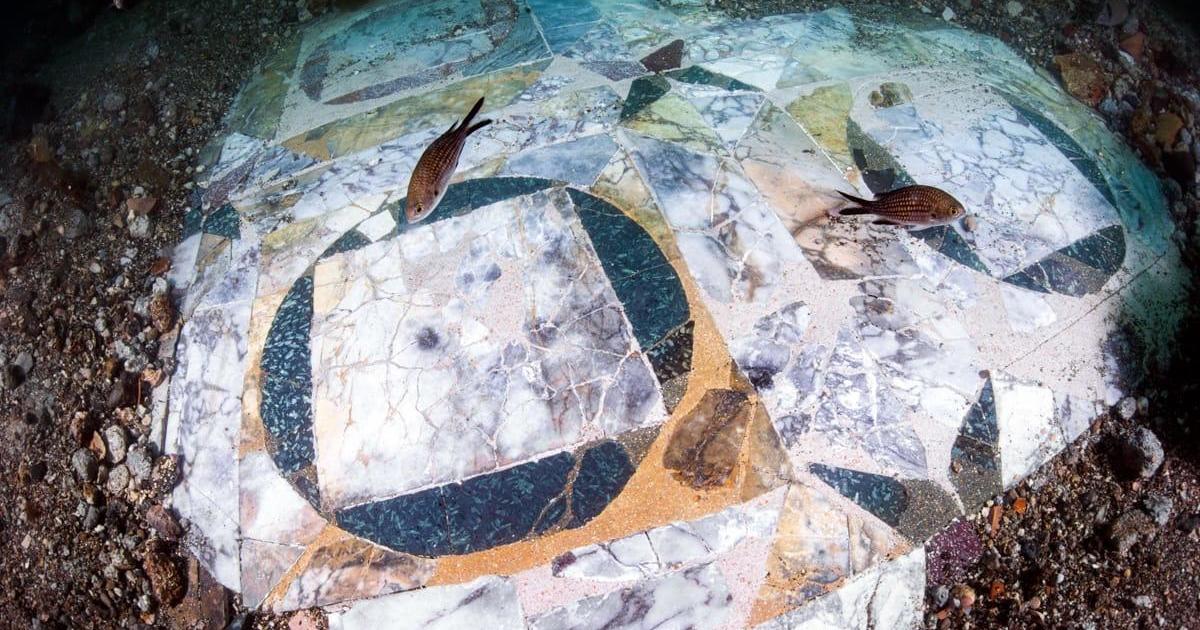
Researchers studying an underwater city in Italy say they have found an ancient mosaic floor that was once the base of a Roman villa, a discovery that the local mayor called “stupendous.”
The discovery was made in Bay Sommersa, a marine-protected area and UNESCO World Heritage Site off the northern coast of the Gulf of Naples. The area was once the Roman city of Baia, but it has become submerged over the centuries thanks to volcanic activity in the area. The underwater structures remain somewhat intact, allowing researchers to make discoveries like the mosaic floor.
The Campi Flegrei Archaeological Park announced the latest discovery, which includes “thousands of marble slabs” in “hundreds of different shapes,” on social media.
“This marble floor has been at the center of the largest underwater restoration work,” the park said, calling the research “a new challenge” and made “very complicated due to the extreme fragment of the remains and their large expansion.”
The marble floor is made of recovered, second-hand marble that had previously been used to decorate other floors or walls, the park said. Each piece of marble was sharpened into a square and inscribed with circles. The floor is likely from the third century A.D., the park said in another post, citing the style of the room and the repurposing of the materials as practices that were common during that time.
Researchers are working carefully to extract the marble pieces from the site, the park said. The recovery work will require careful digging around collapsed walls and other fragmented slabs, but researchers hope to “be able to save some of the geometries.”
Once recovered, the slabs are being brought to land and cleaned in freshwater tanks. The marble pieces are then being studied “slab by slab” to try to recreate the former mosaic, the park said.
“The work is still long and complex, but we are sure that it will offer many prompts and great satisfactions,” the park said.
Technology
SpaceX fires up Starship engines ahead of fifth test flight
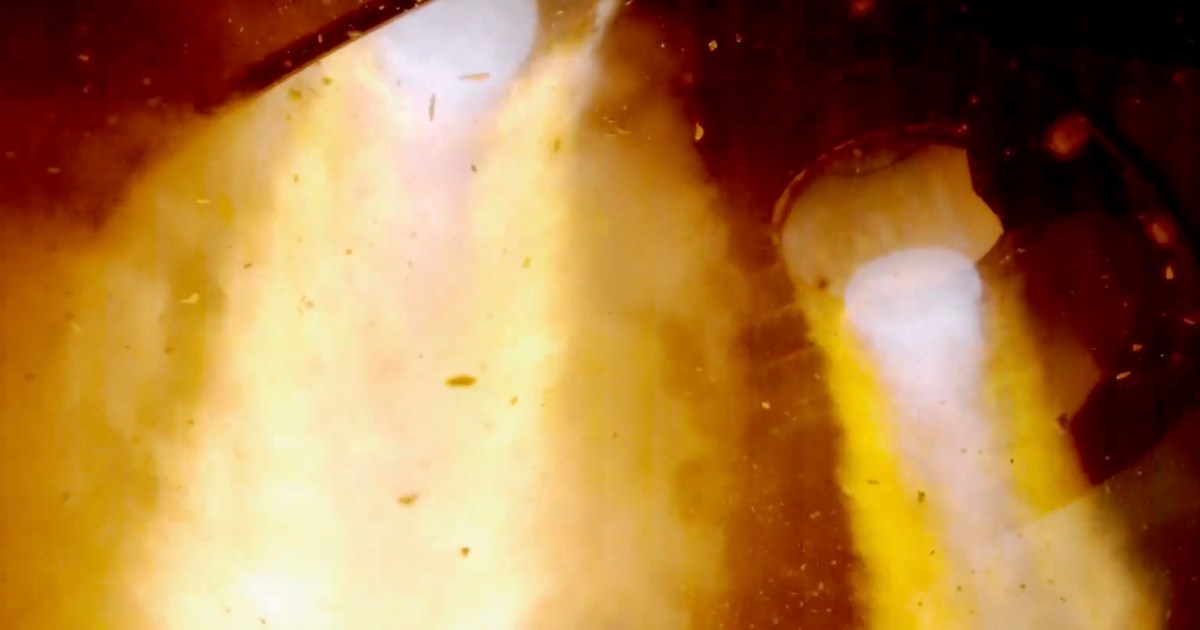

SpaceX has just performed a static fire of the six engines on its Starship spacecraft as it awaits permission from the Federal Aviation Administration (FAA) for the fifth test flight of the world’s most powerful rocket.
The Elon Musk-led spaceflight company shared footage and an image of the test fire on X (formerly Twitter) on Thursday. It shows the engines firing up while the vehicle remained on the ground.
Six engine static fire of Flight 6 Starship pic.twitter.com/fzJz9BWBn6
— SpaceX (@SpaceX) September 19, 2024
For flights, the Starship spacecraft is carried to orbit by the first-stage Super Heavy booster, which pumps out 17 million pounds of thrust at launch, making it the most powerful rocket ever built.
The Super Heavy booster and Starship spacecraft — collectively known as the Starship — have launched four times to date, with the performance of each test flight showing improvements over the previous one.
The first one, for example, exploded shortly after lift off from SpaceX’s Starbase facility in Boca Chica, Texas, in April last year, while the second effort, which took place seven months later, achieved stage separation before an explosion occurred — an incident that was captured in dramatic footage. The third and fourth flights lasted much longer and achieved many of the mission objectives, including getting the Starship spacecraft to orbit.
The fifth test flight isn’t likely to take place until November at the earliest, according to a recent report. It will involve the first attempt to use giant mechanical arms to “catch” the Super Heavy booster as it returns to the launch area. SpaceX recently expressed extreme disappointment at the time that it’s taking the FAA to complete an investigation that will pave the way for the fifth Starship test, and has said that it’ll be ready to launch the vehicle within days of getting permission from the FAA.
Once testing is complete, NASA wants to use the Starship, along with its own Space Launch System rocket, to launch crew and cargo to the moon and quite possibly for destinations much further into space such as Mars. NASA is already planning to use a modified version of the Starship spacecraft to land the first astronauts in five decades on the lunar surface in the Artemis III mission, currently set for 2026.
-

 Sport11 hours ago
Sport11 hours agoJoshua vs Dubois: Chris Eubank Jr says ‘AJ’ could beat Tyson Fury and any other heavyweight in the world
-

 News1 day ago
News1 day agoYou’re a Hypocrite, And So Am I
-

 News11 hours ago
News11 hours agoIsrael strikes Lebanese targets as Hizbollah chief warns of ‘red lines’ crossed
-

 Sport10 hours ago
Sport10 hours agoUFC Edmonton fight card revealed, including Brandon Moreno vs. Amir Albazi headliner
-

 Technology9 hours ago
Technology9 hours agoiPhone 15 Pro Max Camera Review: Depth and Reach
-

 Science & Environment13 hours ago
Science & Environment13 hours agoHow one theory ties together everything we know about the universe
-

 Science & Environment21 hours ago
Science & Environment21 hours agoSunlight-trapping device can generate temperatures over 1000°C
-

 News8 hours ago
News8 hours agoBrian Tyree Henry on voicing young Megatron, his love for villain roles
-

 Science & Environment1 day ago
Science & Environment1 day agoQuantum time travel: The experiment to ‘send a particle into the past’
-

 CryptoCurrency10 hours ago
CryptoCurrency10 hours ago2 auditors miss $27M Penpie flaw, Pythia’s ‘claim rewards’ bug: Crypto-Sec
-

 CryptoCurrency10 hours ago
CryptoCurrency10 hours agoBitcoin miners steamrolled after electricity thefts, exchange ‘closure’ scam: Asia Express
-

 CryptoCurrency10 hours ago
CryptoCurrency10 hours agoCardano founder to meet Argentina president Javier Milei
-

 CryptoCurrency10 hours ago
CryptoCurrency10 hours agoDorsey’s ‘marketplace of algorithms’ could fix social media… so why hasn’t it?
-

 CryptoCurrency10 hours ago
CryptoCurrency10 hours agoLow users, sex predators kill Korean metaverses, 3AC sues Terra: Asia Express
-
Business9 hours ago
How Labour donor’s largesse tarnished government’s squeaky clean image
-

 Science & Environment13 hours ago
Science & Environment13 hours ago‘Running of the bulls’ festival crowds move like charged particles
-

 CryptoCurrency9 hours ago
CryptoCurrency9 hours agoEthereum is a 'contrarian bet' into 2025, says Bitwise exec
-

 Science & Environment13 hours ago
Science & Environment13 hours agoRethinking space and time could let us do away with dark matter
-

 Science & Environment10 hours ago
Science & Environment10 hours agoWe may have spotted a parallel universe going backwards in time
-

 CryptoCurrency10 hours ago
CryptoCurrency10 hours agoArthur Hayes’ ‘sub $50K’ Bitcoin call, Mt. Gox CEO’s new exchange, and more: Hodler’s Digest, Sept. 1 – 7
-

 CryptoCurrency10 hours ago
CryptoCurrency10 hours agoTreason in Taiwan paid in Tether, East’s crypto exchange resurgence: Asia Express
-

 CryptoCurrency10 hours ago
CryptoCurrency10 hours agoLeaked Chainalysis video suggests Monero transactions may be traceable
-

 CryptoCurrency10 hours ago
CryptoCurrency10 hours agoJourneys: Robby Yung on Animoca’s Web3 investments, TON and the Mocaverse
-

 CryptoCurrency10 hours ago
CryptoCurrency10 hours agoLouisiana takes first crypto payment over Bitcoin Lightning
-

 CryptoCurrency10 hours ago
CryptoCurrency10 hours agoAre there ‘too many’ blockchains for gaming? Sui’s randomness feature: Web3 Gamer
-

 CryptoCurrency10 hours ago
CryptoCurrency10 hours agoCrypto whales like Humpy are gaming DAO votes — but there are solutions
-

 CryptoCurrency10 hours ago
CryptoCurrency10 hours agoHelp! My parents are addicted to Pi Network crypto tapper
-

 CryptoCurrency10 hours ago
CryptoCurrency10 hours ago$12.1M fraud suspect with ‘new face’ arrested, crypto scam boiler rooms busted: Asia Express
-

 CryptoCurrency10 hours ago
CryptoCurrency10 hours ago‘Everything feels like it’s going to shit’: Peter McCormack reveals new podcast
-

 Science & Environment13 hours ago
Science & Environment13 hours agoFuture of fusion: How the UK’s JET reactor paved the way for ITER
-

 CryptoCurrency10 hours ago
CryptoCurrency10 hours agoSEC sues ‘fake’ crypto exchanges in first action on pig butchering scams
-

 CryptoCurrency10 hours ago
CryptoCurrency10 hours agoFed rate cut may be politically motivated, will increase inflation: Arthur Hayes
-

 CryptoCurrency10 hours ago
CryptoCurrency10 hours agoDecentraland X account hacked, phishing scam targets MANA airdrop
-

 CryptoCurrency10 hours ago
CryptoCurrency10 hours agoCZ and Binance face new lawsuit, RFK Jr suspends campaign, and more: Hodler’s Digest Aug. 18 – 24
-

 CryptoCurrency10 hours ago
CryptoCurrency10 hours agoCertiK Ventures discloses $45M investment plan to boost Web3
-

 CryptoCurrency10 hours ago
CryptoCurrency10 hours agoMemecoins not the ‘right move’ for celebs, but DApps might be — Skale Labs CMO
-

 CryptoCurrency10 hours ago
CryptoCurrency10 hours agoTelegram bot Banana Gun’s users drained of over $1.9M
-

 CryptoCurrency10 hours ago
CryptoCurrency10 hours agoDZ Bank partners with Boerse Stuttgart for crypto trading
-

 CryptoCurrency10 hours ago
CryptoCurrency10 hours agoRedStone integrates first oracle price feeds on TON blockchain
-

 CryptoCurrency10 hours ago
CryptoCurrency10 hours agoBitcoin bulls target $64K BTC price hurdle as US stocks eye new record
-

 CryptoCurrency10 hours ago
CryptoCurrency10 hours agoSEC asks court for four months to produce documents for Coinbase
-

 CryptoCurrency10 hours ago
CryptoCurrency10 hours ago‘No matter how bad it gets, there’s a lot going on with NFTs’: 24 Hours of Art, NFT Creator
-

 CryptoCurrency10 hours ago
CryptoCurrency10 hours agoBlockdaemon mulls 2026 IPO: Report
-
Business10 hours ago
Thames Water seeks extension on debt terms to avoid renationalisation
-

 Politics10 hours ago
Politics10 hours agoI’m in control, says Keir Starmer after Sue Gray pay leaks
-
Politics9 hours ago
‘Appalling’ rows over Sue Gray must stop, senior ministers say | Sue Gray
-
Business8 hours ago
Axel Springer top team close to making eight times their money in KKR deal
-

 News8 hours ago
News8 hours ago“Beast Games” contestants sue MrBeast’s production company over “chronic mistreatment”
-

 News8 hours ago
News8 hours agoSean “Diddy” Combs denied bail again in federal sex trafficking case in New York
-

 News8 hours ago
News8 hours agoBrian Tyree Henry on his love for playing villains ahead of “Transformers One” release
-

 News8 hours ago
News8 hours agoBrian Tyree Henry on voicing young Megatron, his love for villain roles
-

 CryptoCurrency8 hours ago
CryptoCurrency8 hours agoCoinbase’s cbBTC surges to third-largest wrapped BTC token in just one week
-

 Technology3 days ago
Technology3 days agoYouTube restricts teenager access to fitness videos
-

 News12 hours ago
News12 hours agoChurch same-sex split affecting bishop appointments
-

 Politics1 day ago
Politics1 day agoWhat is the House of Lords, how does it work and how is it changing?
-

 Politics1 day ago
Politics1 day agoKeir Starmer facing flashpoints with the trade unions
-

 Health & fitness2 days ago
Health & fitness2 days agoWhy you should take a cheat day from your diet, and how many calories to eat
-

 Science & Environment1 day ago
Science & Environment1 day agoElon Musk’s SpaceX contracted to destroy retired space station
-

 MMA10 hours ago
MMA10 hours agoUFC’s Cory Sandhagen says Deiveson Figueiredo turned down fight offer
-

 MMA10 hours ago
MMA10 hours agoDiego Lopes declines Movsar Evloev’s request to step in at UFC 307
-

 Football10 hours ago
Football10 hours agoNiamh Charles: Chelsea defender has successful shoulder surgery
-

 Football10 hours ago
Football10 hours agoSlot's midfield tweak key to Liverpool victory in Milan
-

 Science & Environment14 hours ago
Science & Environment14 hours agoHyperelastic gel is one of the stretchiest materials known to science
-

 Science & Environment13 hours ago
Science & Environment13 hours agoHow to wrap your head around the most mind-bending theories of reality
-

 Technology2 days ago
Technology2 days agoCan technology fix the ‘broken’ concert ticketing system?
-

 Fashion Models9 hours ago
Fashion Models9 hours agoMiranda Kerr nude
-

 Fashion Models9 hours ago
Fashion Models9 hours ago“Playmate of the Year” magazine covers of Playboy from 1971–1980
-

 Science & Environment18 hours ago
Science & Environment18 hours agoA new kind of experiment at the Large Hadron Collider could unravel quantum reality
-

 Health & fitness2 days ago
Health & fitness2 days ago11 reasons why you should stop your fizzy drink habit in 2022
-

 Politics9 hours ago
Politics9 hours agoLabour MP urges UK government to nationalise Grangemouth refinery
-

 Technology2 days ago
Technology2 days agoWhat will future aerial dogfights look like?
-

 Science & Environment12 hours ago
Science & Environment12 hours agoOdd quantum property may let us chill things closer to absolute zero
-

 Science & Environment19 hours ago
Science & Environment19 hours agoQuantum forces used to automatically assemble tiny device
-

 Entertainment8 hours ago
Entertainment8 hours ago“Jimmy Carter 100” concert celebrates former president’s 100th birthday
-

 CryptoCurrency10 hours ago
CryptoCurrency10 hours agoSEC settles with Rari Capital over DeFi pools, unregistered broker activity
-

 News8 hours ago
News8 hours agoJoe Posnanski revisits iconic football moments in new book, “Why We Love Football”
-

 Health & fitness2 days ago
Health & fitness2 days agoHow to adopt mindful drinking in 2022
-

 Health & fitness2 days ago
Health & fitness2 days agoWhat 10 days of a clean eating plan actually does to your body and why to adopt this diet in 2022
-

 Health & fitness2 days ago
Health & fitness2 days agoWhen Britons need GoFundMe to pay for surgery, it’s clear the NHS backlog is a political time bomb
-

 Health & fitness2 days ago
Health & fitness2 days agoThe maps that could hold the secret to curing cancer
-
Health & fitness2 days ago
Covid v flu v cold and how to tell the difference between symptoms this winter
-

 Science & Environment23 hours ago
Science & Environment23 hours agoQuantum to cosmos: Why scale is vital to our understanding of reality
-
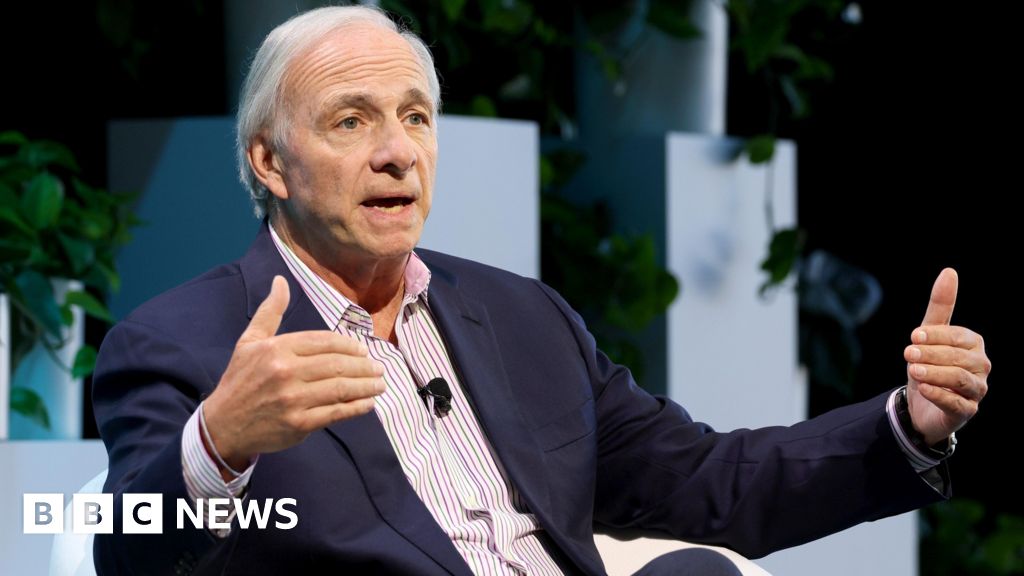
 Business2 days ago
Business2 days agoBillionaire investor Ray Dalio warns of threat to democracy
-

 Science & Environment1 day ago
Science & Environment1 day agoHow to wrap your mind around the real multiverse
-

 Technology3 days ago
Technology3 days agoTrump says Musk could head ‘government efficiency’ force
-
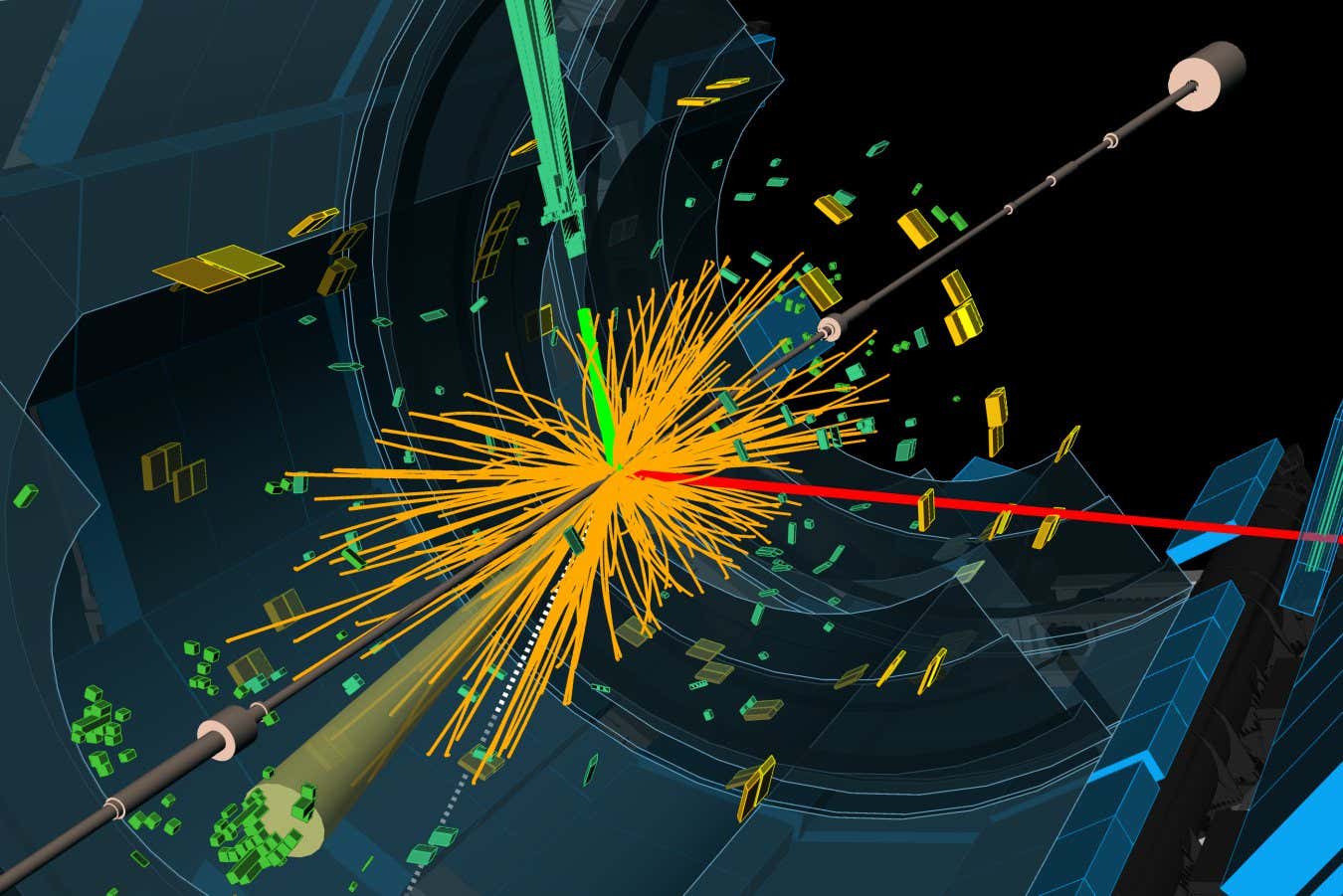
 Science & Environment2 days ago
Science & Environment2 days agoParticle physicists may have solved a strange mystery about the muon
-

 Science & Environment1 day ago
Science & Environment1 day agoTime may be an illusion created by quantum entanglement
-

 Science & Environment1 day ago
Science & Environment1 day agoHow the weird and powerful pull of black holes made me a physicist
-

 Politics23 hours ago
Politics23 hours agoIs there a £22bn ‘black hole’ in the UK’s public finances?
-

 Science & Environment23 hours ago
Science & Environment23 hours agoX-ray laser fires most powerful pulse ever recorded
-

 Science & Environment22 hours ago
Science & Environment22 hours agoWhat are fractals and how can they help us understand the world?
-

 Science & Environment22 hours ago
Science & Environment22 hours agoHow indefinite causality could lead us to a theory of quantum gravity
-

 Science & Environment21 hours ago
Science & Environment21 hours agoDoughnut-shaped swirls of laser light can be used to transmit images
-

 Science & Environment21 hours ago
Science & Environment21 hours agoBeing in two places at once could make a quantum battery charge faster
-

 Science & Environment20 hours ago
Science & Environment20 hours agoWhy we are finally within reach of a room-temperature superconductor
-

 Science & Environment20 hours ago
Science & Environment20 hours agoBlack holes scramble information – but may not be the best at it
-

 Science & Environment19 hours ago
Science & Environment19 hours agoThe galactic anomalies hinting dark matter is weirder than we thought
-

 CryptoCurrency10 hours ago
CryptoCurrency10 hours agoTelegram CEO cannot leave France, OpenSea receives Wells notice, and more: Hodler’s Digest, Aug. 25 – 31
-

 CryptoCurrency10 hours ago
CryptoCurrency10 hours agoFive crypto market predictions that haven’t come true — yet
-

 CryptoCurrency10 hours ago
CryptoCurrency10 hours agoSolana unveils new Seeker device, says it’s not just a ‘memecoin phone’







You must be logged in to post a comment Login